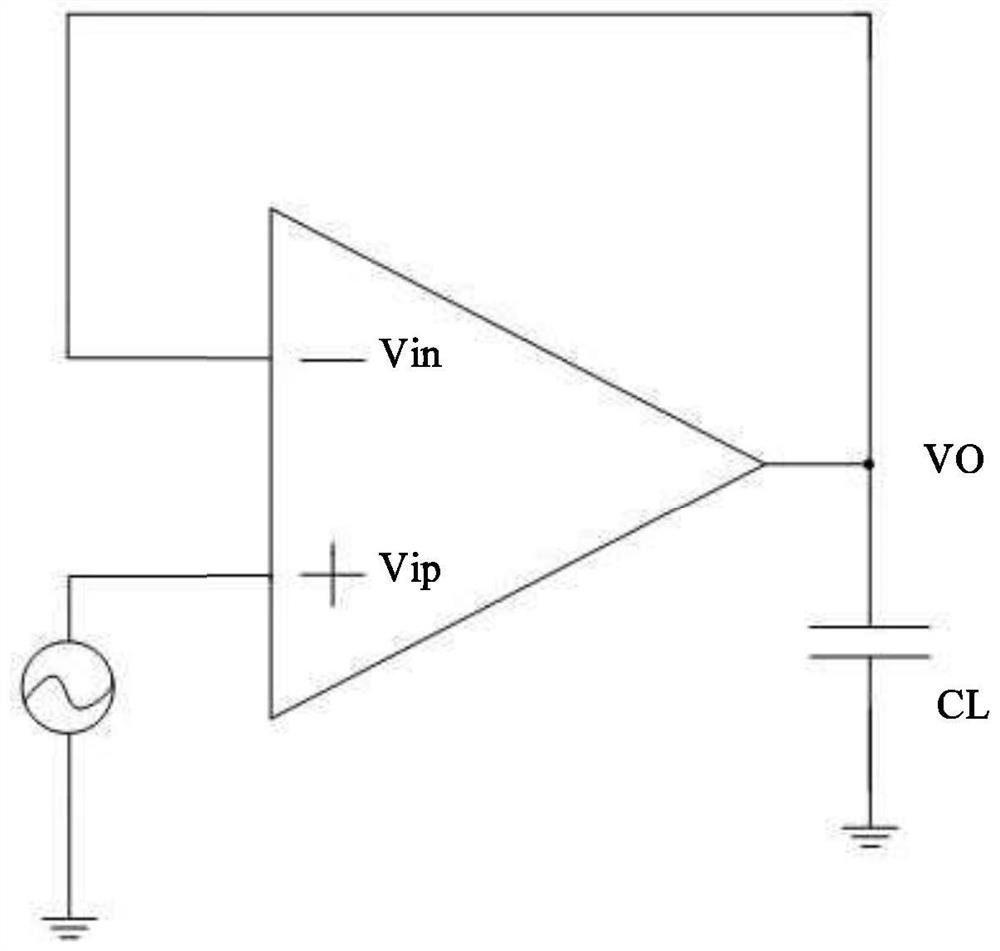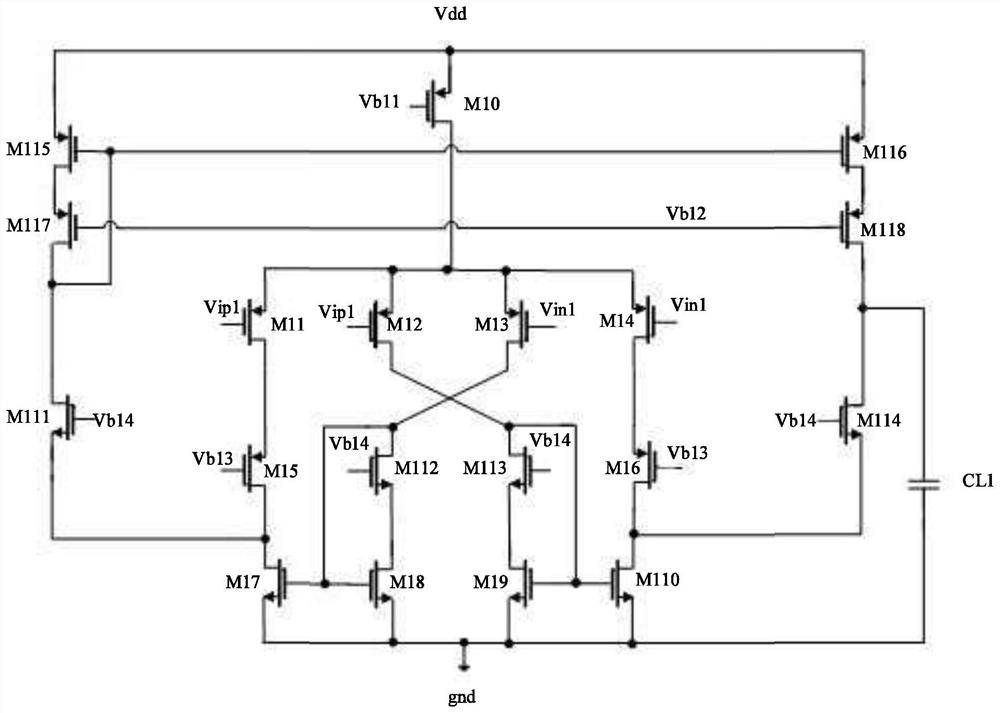Operational Amplifier Circuit
A technology of operational amplifiers and amplifiers, applied in amplifiers, differential amplifiers, DC-coupled DC amplifiers, etc., can solve the problems of decreased anti-power interference ability, decreased steady-state accuracy of operational amplifiers, and increased system errors, achieving high PSRR, The effect of high gain and accelerated charge and discharge speed
- Summary
- Abstract
- Description
- Claims
- Application Information
AI Technical Summary
Problems solved by technology
Method used
Image
Examples
Embodiment Construction
[0023] In practical applications, one use of operational amplifiers is to drive large capacitive loads such as figure 1 as shown, figure 1 It is a schematic diagram of an operational amplifier circuit driving a load in the prior art. The non-inverting input terminal Vip of the operational amplifier is connected to the input signal source, and its inverting input terminal Vin is connected to the output node Vo. In addition, the output node Vo is also connected to the load capacitance The upper plate of CL.
[0024] figure 2 It is a structural schematic diagram of an operational amplifier circuit in the prior art. The operational amplifier circuit includes: a plurality of MOS transistors M10-M118, a non-inverting input terminal Vip1 and an inverting input terminal Vin1. The output node Vo1 of the operational amplifier circuit is connected to the load capacitor CL1.
[0025] figure 2 Compared with the traditional operational amplifier circuit, the loop-folding cascode oper...
PUM
 Login to View More
Login to View More Abstract
Description
Claims
Application Information
 Login to View More
Login to View More - R&D
- Intellectual Property
- Life Sciences
- Materials
- Tech Scout
- Unparalleled Data Quality
- Higher Quality Content
- 60% Fewer Hallucinations
Browse by: Latest US Patents, China's latest patents, Technical Efficacy Thesaurus, Application Domain, Technology Topic, Popular Technical Reports.
© 2025 PatSnap. All rights reserved.Legal|Privacy policy|Modern Slavery Act Transparency Statement|Sitemap|About US| Contact US: help@patsnap.com



